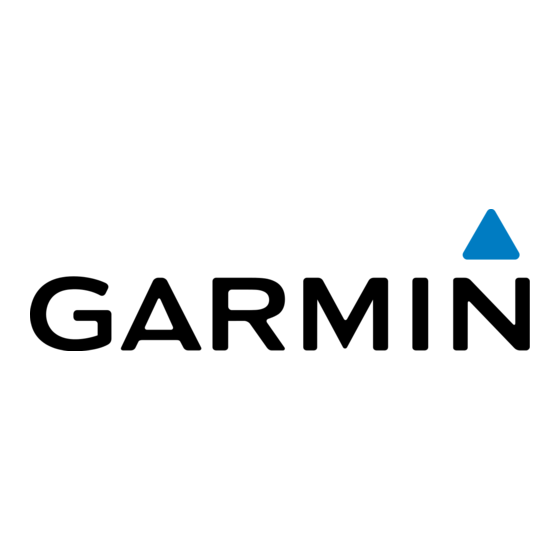Power Connection and Distribution
Your NMEA 2000 network must be connected to a 12 Vdc power supply. Do not connect your NMEA 2000 network to any other voltage
source, such as a 24 Vdc power supply. Use a NMEA 2000 power cable to connect your NMEA 2000 backbone to the auxiliary power switch
on your boat. If you do not have an auxiliary power switch, or if connecting to the auxiliary power switch causes electrical interference, connect
the NMEA 2000 power cable directly to the battery and install an in-line switch.
CautioN: If you connect the NMEA 2000 network to your battery without an in-line switch, it may drain your battery.
Be sure to ground the NMEA 2000 power cable. Connect the bare shield-drain wire to the same location as the ground (black) wire.
The Garmin NMEA 2000 power cable connects to a T-connector like other drop cables. Be sure to connect the NMEA 2000 power cable to the
top of a T-connector; never connect the NMEA 2000 power cable to the side of a T-connector. You can connect power either at the end of your
NMEA 2000 network or in the middle. When planning where to place the power cable and the T-connector on your NMEA 2000 network, you
will need to evaluate how the NMEA 2000 devices connected to your network use power. The NMEA 2000 network will work properly when
there is no more than a 3 Vdc drop in the supply voltage between the power source and the NMEA 2000 device located farthest from the power
source on the NMEA 2000 network. To determine the voltage drop in your NMEA 2000 network, use this equation:
Voltage Drop = Cable resistance (ohms/m)* × Distance (from the battery to the farthest device, in meters) × Network Load** × 0.1
* Garmin cable resistance value = 0.0
** Network Load = the sum of Load Equivalent Numbers (LEN) between the battery and the end of the network. The LEN for each device should be visible on
the device, or provided in the documentation for the device.
•
If you calculate a voltage drop of 3.0 Vdc or less, then you can connect power to either the end or the middle of your NMEA 2000 network,
and it will function correctly.
•
If you calculate a voltage drop of more than 3.0 Vdc, you must connect power to the middle of your NMEA 2000 network. The location will
depend on the network load and distance from the battery. Try to balance the voltage drop equally on both sides of the power connection.
•
If a voltage drop of under 3.0 Vdc is not possible on your NMEA 2000 network, contact a professional installer.
Examples
The following examples show a correctly designed, end-powered NMEA 2000 network; an incorrectly designed NMEA 2000 network; and a
redesign of the incorrectly designed NMEA 2000 network to correctly balance power on the network.
End-powered NMEA 2000 network, correctly designed:
-
+
Power cable
Length = 2 m
When the voltage-drop formula is applied to this example, we
see that the voltage drop is less than 3.0 Vdc. This NMEA 2000
network will function correctly when powered at the end.
Technical Reference for Garmin NMEA 2000 Products
NMEA 2000-
compliant device
LEN =
Drop cable
Length = 2 m
Backbone cable
Length = 0 m
NMEA 2000-
compliant device
LEN =
Drop cable
Length = 6 m
Backbone cable
Length = 0 m
Voltage Drop = 0.053 × (2 + 10 + 10 + 6) × (4 + 5 + 7) × 0.1 = 2.37 Vdc
Cable
Cable
resistance
resistance
NMEA 2000 Fundamentals
NMEA 2000-
compliant device
LEN = 7
Drop cable
Length = 6 m
Distance
Distance
Network load
Network load

